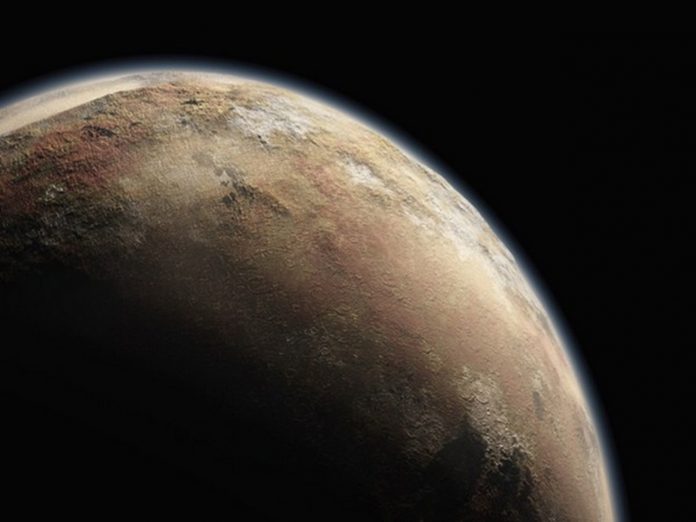A “beating heart” of frozen nitrogen controls Pluto’s winds and may give rise to features on its surface, according to a new study.
The heart-shaped structure named Tombaugh Regio became famous in 2015 after NASA’s New Horizons mission captured footage of the dwarf planet and revealed it isn’t the barren world scientists thought it was.
Now, research led by Tanguy Bertrand from NASA’s Ames Research Centre in California and published in the Journal of Geophysical Research: Planets shows it rules Pluto’s atmospheric circulation.
Pluto’s thin atmosphere is mostly nitrogen gas (along with small amounts of carbon monoxide and methane), and frozen nitrogen also covers part of its surface.
During the day, a thin layer of this nitrogen ice warms and turns into vapour. At night, the vapour condenses and once again forms ice.
Each sequence is like a heartbeat, pumping nitrogen winds around the planet. The new research suggests this cycle pushes Pluto’s atmosphere to circulate in the opposite direction of its spin – a unique phenomenon called retro-rotation.
As air whips close to the surface, it transports heat, grains of ice and haze particles to create dark wind streaks and plains across the north and northwestern regions.
“This highlights the fact that Pluto’s atmosphere and winds – even if the density of the atmosphere is very low – can impact the surface,” says Bertrand.
Most of Pluto’s nitrogen ice is confined to Tombaugh Regio. Its left “lobe” is a 1000-kilometre ice sheet located in a three-kilometre deep basin named Sputnik Planitia – an area that holds most of the dwarf planet’s nitrogen ice because of its low elevation. The right “lobe” comprises highlands and nitrogen-rich glaciers that extend into the basin.
Bertrand and his colleagues set out to determine how circulating air – which is 100,000 times thinner than that of Earth’s – might shape features on the surface.
The team pulled data from New Horizons’ 2015 flyby to depict Pluto’s topography and its blankets of nitrogen ice. They then simulated the nitrogen cycle with a weather forecast model and assessed how winds blew across the surface.
They discovered Pluto’s winds above four kilometres blow to the west — the opposite direction from the dwarf planet’s eastern spin — in a retro-rotation during most of its year.
As nitrogen within Tombaugh Regio vapourises in the north and becomes ice in the south, its movement triggers westward winds, according to the study. No other place in the Solar System has such an atmosphere, except perhaps Neptune’s moon Triton.
The researchers also found a strong current of fast-moving, near-surface air along the western boundary of the Sputnik Planitia basin.
Atmospheric nitrogen condensing into ice drives this wind pattern, according to the new findings. Sputnik Planitia’s high cliffs trap the cold air inside the basin, where it circulates and becomes stronger as it passes through the western region.
“Sputnik Planitia may be as important for Pluto’s climate as the ocean is for Earth’s climate,” Bertrand says. “If you remove Sputnik Planitia – if you remove the heart of Pluto – you won’t have the same circulation.”.





























